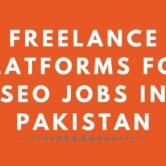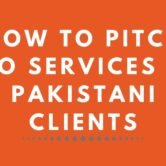Search is the front door of the internet in Pakistan. Whether you’re an e‑commerce brand in Karachi, a fintech startup in Lahore, a B2B exporter in Sialkot, or a clinic in Islamabad, ranking on Google can define your revenue curve. With Google commanding the lion’s share of search and tens of millions of connected users nationwide, the brands shipping “top SEO projects” here are the ones turning organic visibility into profitable growth. This guide breaks down what those high-performing SEO engagements actually look like in Pakistan—how they’re scoped, executed, and measured.
Hallmarks of Top-Tier SEO Projects in Pakistan
1) Market-grounded research that reflects local reality
Pakistan’s search behavior is multilingual (English, Urdu, Roman Urdu), mobile-first, and heavily seasonal. Winning projects start with research that fits this context.
- Intent mapping by language and region: Queries differ across Karachi, Lahore, Islamabad, and secondary cities. Top teams classify keywords by intent (informational/transactional/local) and language variant.
- Seasonality and cultural calendars: Ramadan, Eid, wedding season, admission cycles, cricket tournaments, and the winter sale period reshape demand. SEO roadmaps align content and technical releases to these peaks.
- SERP feature analysis: Pakistan’s SERPs are rich with People Also Ask, featured snippets, video carousels, Top Stories, and the local map pack. Projects target the specific search features that dominate each query class.
- Competitor gap analysis: From local marketplaces to international players, the best teams quantify content, link, and technical gaps—then prioritize what is winnable within budget and time.
2) Technical infrastructure built for speed, crawlability, and scale
Patchy connectivity and lower-end devices make speed and mobile UX non-negotiable in Pakistan. Technical SEO is not a checkbox; it is a growth lever.
- Core Web Vitals (CWV): Improving LCP, CLS, and INP via image optimization (AVIF/WebP), lazy-loading, preconnect/preload, font strategy, and eliminating render-blocking JS/CSS. Lightweight frameworks and server-side rendering (SSR) often outperform heavy client-side setups.
- Hosting and CDN choices: Low TTFB through regional CDNs, edge caching, and tuned origin servers. Compression, caching headers, and smart cache invalidation matter.
- Crawl budget management: Log-file analysis, XML sitemap hygiene, sensible robots.txt rules, and eliminating infinite crawl paths from faceted navigation and filters.
- Canonicalization and pagination: Avoid duplicate content across PLPs/PDPs, sale variants, and UTM chaos. Implement rel=canonical, rel=next/prev alternatives via robust internal linking patterns.
- Internationalization and localization: hreflang for Urdu/English variants, language toggles that don’t break indexation, and consistent URL structures.
- Structured data: Product, Article, FAQPage, BreadcrumbList, HowTo, LocalBusiness, and Organization schema to capture rich results and build E‑E‑A‑T signals.
- Error handling: Clean 404s, redirect logic for sunsetting products/URLs, and monitoring index coverage in Google Search Console (GSC).
- Analytics hygiene: GA4 with enhanced measurement, server-side tagging where needed, and exact match between business goals and event/conversion definitions.
3) Content engines that build topical authority
Pakistan’s top SEO programs ship content that answers user questions precisely, in the language and format people prefer, and in a structure that signals authority to Google.
- Topic clusters and pillar pages: Architect content around core money pages and their supporting clusters. Internal links pass context and PageRank, not just navigation.
- Bilingual and cultural nuance: Mix English, Urdu, and Roman Urdu where appropriate. Keep message consistent; avoid thin auto-translations.
- E‑E‑A‑T: Use expert bylines, citations, and first-hand experience. For YMYL topics (finance, health), editorial rigor and fact-checking are essential.
- Commercial content that actually converts: For e‑commerce, strengthen PLP/PDP copy, comparison charts, FAQs, and returns/warranty content. For B2B, ship case studies, implementation guides, and ROI calculators.
- Media formats aligned to SERP: If the SERP shows videos and “how-to” cards, include short-form video, step-by-step guides, and FAQs to match it.
4) Strategic link earning and digital PR
High-trust links are still a moat. In Pakistan, that means earning coverage and mentions from reputable local and regional sources.
- Digital PR with local angles: Data-backed stories on consumer behavior, inflation impacts, or cricket-driven demand spikes get picked up by news portals and blogs.
- Industry partnerships: Chambers of commerce, trade associations, universities, and reputable directories offer authoritative citations and backlinks.
- Influencer/editorial collaborations: Outreach to niche publishers and creators who serve your exact audience; avoid low-quality link farms and PBNs.
- Brand mentions into links: Convert unlinked mentions into earned links with thoughtful outreach.
5) Local SEO excellence for Pakistan’s cities
For service businesses and retail, local SEO drives footfall and leads.
- Google Business Profile (GBP): Complete profiles in English and Urdu, services/products populated, Q&A seeded, business categories optimized, and updates posted during seasonal campaigns.
- NAP consistency and citations: Align name, address, phone across local directories and social profiles. Embed map and collect local reviews.
- Local landing pages: City/area pages with unique content and proof of presence (photos, case studies, hours, WhatsApp click-to-chat).
6) Measurement that ties SEO to revenue
Mature projects connect rankings to pipeline and profit—not just traffic.
- North-star metrics: Non-brand clicks, qualified leads, revenue from organic, assisted conversions, and customer acquisition cost versus paid search.
- Dashboards: GA4 + GSC + Looker Studio (or BigQuery) to track by segment, device, and language. Group keywords by intent and page type for realistic progress checks.
- Experimentation: On-page tests (titles, FAQs), internal link experiments, and content updates measured over 28–90 days with clear hypotheses.
A Repeatable Project Blueprint
- Discovery & Strategy (Weeks 1–4):
- Audit analytics and tracking; capture baselines.
- Keyword and intent research with seasonality overlays.
- Competitor gap analysis; define topic clusters.
- Technical crawl and risk assessment.
- Roadmap with quarterly milestones tied to business KPIs.
- Technical Fix & Foundation (Weeks 3–10):
- Core Web Vitals improvements and SSR/Caching decisions.
- Indexation clean-up, canonical and faceted navigation controls.
- Structured data, sitemap and robots.txt hygiene.
- GA4/GSC setup and server-side tagging where needed.
- Content Production Engine (Ongoing):
- Publish pillar pages and supporting cluster content.
- Localization for Urdu/Roman Urdu, editorial standards, E‑E‑A‑T.
- PLP/PDP enhancements, FAQs, comparators, and buying guides.
- Link Earning & Digital PR (Ongoing):
- Data-led stories and local media outreach.
- Partnerships, citations, and unlinked brand mentions.
- Strict avoidance of spammy link schemes.
- Local SEO (If applicable):
- GBP optimization, review-building playbook, and city pages.
- NAP audits, local citations, and WhatsApp/contact conversion paths.
- Measurement & Iteration (Monthly/Quarterly):
- Report on revenue, qualified leads, and non-brand growth.
- Prioritize backlogs via impact x effort.
- Refresh winners, retire underperformers, and test again.
As an SEO agency based in Pakistan, NB Disruptors has seen that the teams who win consistently follow this blueprint closely, adapt fast to seasonality, and never compromise on technical quality.
Real-World Snapshots (Composite Examples)
The outcomes below are synthesized from typical project patterns in Pakistan; your exact numbers will vary by niche, domain history, and resources.
- E‑commerce fashion: After fixing CWV and canonical issues across a 50,000-URL catalog, then building category-level guides and influencer-driven PR, non-brand clicks often begin compounding within 8–16 weeks. Category pages capture featured snippets and “best X for Y” queries; PDPs gain FAQ rich results, lifting CTR.
- Fintech app: Localized content around credit, bills, and savings in English/Urdu, plus app store optimization and educational blogs, typically increases search visibility while reducing paid acquisition dependency. Trust markers and schema boost YMYL credibility.
- Real estate portal: City and area hubs, schema for addresses, and crawl management for filters avoid index bloat. Internal linking from guides to listings increases discovery and conversions from organic sessions.
- B2B exporter: Product application pages, technical specs, case studies, and trade association links build authority. Long-tail international queries become a steady source of qualified RFQs.
- Clinics and healthcare: Doctor profiles with medical reviewer bylines, Urdu-language patient guides, and strong GBP management drive increases in calls and appointment requests from the map pack.
Industry-Specific Adaptations
E‑commerce and Marketplaces
- Templatized on-page SEO for PLPs/PDPs with dynamic FAQs.
- Faceted navigation controls to prevent duplicate/near-duplicate pages.
- Returns, shipping, and warranty content to address conversion friction.
- Sale calendars synced with Ramadan and Eid periods.
B2B and Export
- Technical documentation, compliance pages, and application notes.
- Trade association links, case studies, and multilingual outreach.
- Lead tracking that connects organic visits to RFQs and deals.
Education and EdTech
- Admissions timelines, program pages, scholarship hubs with FAQ schema.
- Program comparisons and graduate outcomes to match high-intent searches.
Local Services (Clinics, Legal, Home Services)
- Service-area pages per city/area with proof (photos, reviews, maps).
- GBP Q&A, medical/legal E‑E‑A‑T, and Urdu support content.
Tooling Stack Commonly Used in Pakistan
- Research and monitoring: Google Keyword Planner, Google Trends, Ahrefs/Semrush, GSC.
- Technical audits: Screaming Frog, Sitebulb, PageSpeed Insights, Lighthouse, Chrome UX Report.
- Analytics: GA4, GSC, Looker Studio; BigQuery for larger data needs.
- Delivery: Modern CMS with SSR options, Cloudflare/BunnyCDN, image CDNs, and CI/CD for rapid iterative releases.
Common Pitfalls and How Top Projects Avoid Them
- Chasing vanity keywords: Focus on non-brand conversions and SERP features, not just rank bragging rights.
- Ignoring technical debt: Core Web Vitals and crawl efficiency can be the difference between flat and compounding growth.
- Thin translations: Invest in proper Urdu/Roman Urdu localization with editorial quality.
- Spammy link building: Avoid PBNs and low-quality directories; build brand-first, PR-led links.
- No stakeholder alignment: Get engineering, product, and content on the same roadmap; SEO is cross-functional.
Timelines and Expectations in the Pakistani Context
While every domain is unique, most top-performing projects show leading indicators within 60–90 days after resolving technical blockers and publishing high-intent content. Meaningful non-brand growth and revenue impact generally compound over 6–12 months, especially when aligned with seasonal demand like Ramadan or admissions windows. Sustainable SEO in Pakistan is a marathon paced by smart sprints.
Key SEO Keywords and Semantics Used Naturally in This Guide
SEO in Pakistan, SEO services in Pakistan, search engine optimization, local SEO Pakistan, e‑commerce SEO, technical SEO audit, Core Web Vitals, Google SERP, content marketing, link building, digital PR, Urdu SEO, Roman Urdu, Google Business Profile, schema markup, crawl budget, site speed, mobile SEO, Karachi, Lahore, Islamabad, organic growth, rankings, featured snippets, People Also Ask.
Conclusion: What “Top” Really Looks Like
Pakistan’s top SEO projects are not mysterious. They’re disciplined, locally informed, and relentlessly measured. They earn search visibility by solving for users first—fast sites, trustworthy content, and helpful experiences in the languages people actually use. They win SERP real estate across organic listings, snippets, videos, and the map pack. Most of all, they link every activity to business outcomes: revenue, leads, and lifetime value.
If you’re planning your next SEO campaign, start with the blueprint above, align it to Pakistan’s seasonality and languages, commit to technical excellence, and iterate. That’s what top-tier looks like—and it’s achievable.




